G.E. Butler's Blog: Important Note - See Sidebar Please, page 7
December 21, 2012
Dangers Seen and Unseen

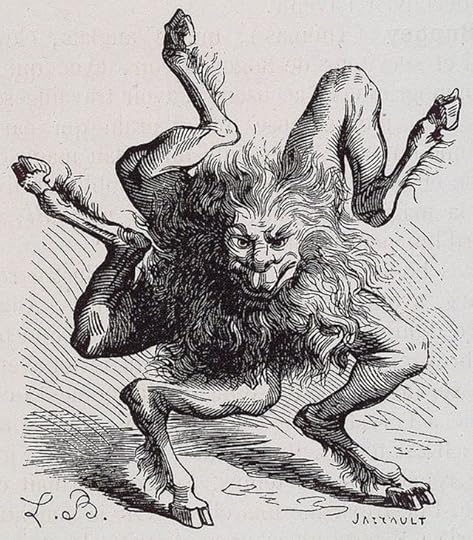
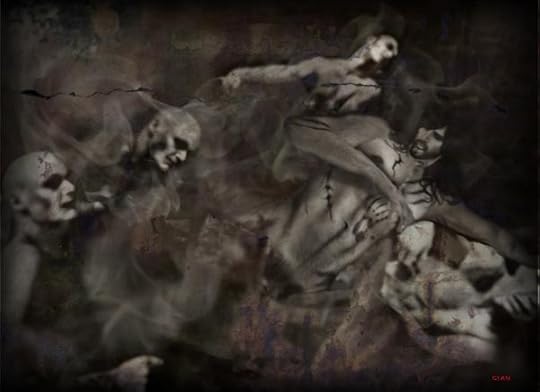

"When an unclean spirit goes out of a man, he goes through dry places, seeking rest, and finds none. Then he says, 'I will return to my house from which I come. And when he comes he finds it empty, swept and in order. Then he goes and takes with him seven other spirits more wicked than himself, and they enter and dwell there; and the last state of that man is worse than the first. So shall it also be with this wicked generation." MATTHEW 12:43-45
One of the activities of evil spirits mentioned in the Bible is that of "familiar" or "divining" spirits. They seem to be able to foretell the future, to some extent. The first mention we see of these spirits in the Scriptures is a warning from God to avoid consorting with them or the mediums that contact them.
LEVITICUS 19:31 "Give no regard to mediums and familiar spirits; do not seek after them, to be defiled by them: I am the LORD your God."
LEVITICUS 20: 6 "And the person who turns to mediums and familiar spirits, to prostitute himself with them, I will set My face against that person and cut him off from his people."
LEVITICUS 20:27 "A man or a woman who is a medium, or who has familiar spirits, shall surely be put to death; they shall stone them with stones. Their blood shall be upon them."
DEUTERONOMY 18:10 There shall not be found in thee one who purges his son or his daughter with fire, one who uses divination, who deals with omens, and augury, 11 a sorcerer employing incantation, one who has in him a divining spirit, an observer of signs, questioning the dead.
I SAMUEL 28:7 Then Saul said to his servants, Seek for me a woman who has in her a divining spirit, and I will go to her, and enquire of her: and his servants said to him, Behold, there is a woman who has in her a divining spirit at Aendor. 8 And Saul disguised himself, and put on other raiment, and he goes, and two men with him, and they come to the woman by night; and he said to her, Divine to me, I pray thee, by the divining spiritwithin thee, and bring up to me him whom I shall name to thee. 9 And the woman said to him, Behold now, thou knowest what Saul has done, how he has cut off those who had in them divining spirits, and the wizards from the land, and why dost thou spread a snare for my life to destroy it?
ACTS 16:16 It happened that as we were going to the place of prayer, a slave-girl having a spirit of divination met us, who was bringing her masters much profit by fortune-telling. 17 Following after Paul and us, she kept crying out, saying, "These men are bond-servants of the Most High God, who are proclaiming to you the way of salvation." 18 She continued doing this for many days. But Paul was greatly annoyed, and turned and said to the spirit, "I command you in the name of Jesus Christ to come out of her!" And it came out at that very moment.
The New Testament clearly records many instances where these evil spirits afflicted people by taking up residence within them. Below are a few of the examples available from the Scriptures.
MARK 7:25 But after hearing of Him, a woman whose little daughter had an unclean spirit immediately came and fell at His feet. 26 Now the woman was a Gentile, of the Syrophoenician race. And she kept asking Him to cast the demon out of her daughter. 27 And He was saying to her, "Let the children be satisfied first, for it is not good to take the children's bread and throw it to the dogs." 28 But she answered and said to Him, "Yes, Lord, but even the dogs under the table feed on the children's crumbs." 29 And He said to her, "Because of this answer go; the demon has gone out of your daughter." 30 And going back to her home, she found the child lying on the bed, the demon having left.
LUKE 9:38 Suddenly a man from the multitude cried out, saying, "Teacher, I implore You, look on my son, for he is my only child. 39 "And behold, a spirit seizes him, and he suddenly cries out; it convulses him so that he foams at the mouth, and it departs from him with great difficulty, bruising him. 40 So I implored Your disciples to cast it out, but they could not." 41 Then Jesus answered and said, "O faithless and perverse generation, how long shall I be with you and bear with you? Bring your son here." 42 And as he was still coming, the demon threw him down and convulsed him. Then Jesus rebuked the unclean spirit, healed the child, and gave him back to his father.
ACTS 19:11 Now God worked unusual miracles by the hands of Paul, 12 so that even handkerchiefs or aprons were brought from his body to the sick, and the diseases left them and the evil spirits went out of them. 13 Then some of the itinerant Jewish exorcists took it upon themselves to call the name of the Lord Jesus over those who had evil spirits, saying, "We exorcise you by the Jesus whom Paul preaches." 14 Also there were seven sons of Sceva, a Jewish chief priest, who did so. 15 And the evil spirit answered and said, "Jesus I know, and Paul I know; but who are you?" 16 Then the man in whom the evil spirit was leaped on them, overpowered them, and prevailed against them, so that they fled out of that house naked and wounded.
LUKE 8:26 Then they sailed to the country of the Gadarenes, which is opposite Galilee. 27 And when He stepped out on the land, there met Him a certain man from the city who had demons for a long time. And he wore no clothes, nor did he live in a house but in the tombs. 28 When he saw Jesus, he cried out, fell down before Him, and with a loud voice said, "What have I to do with You, Jesus, Son of the Most High God? I beg You, do not torment me!" 29 For He had commanded the unclean spiritto come out of the man. For it had often seized him, and he was kept under guard, bound with chains and shackles; and he broke the bonds and was driven by the demon into the wilderness. 30 Jesus asked him, saying, "What is your name?" And he said, "Legion," because many demons had entered him. 31 And they begged Him that He would not command them to go out into the Abyss. 32 Now a herd of many swine was feeding there on the mountain. So they begged Him that He would permit them to enter them. And He permitted them. 33 Then the demons went out of the man and entered the swine, and the herd ran violently down the steep place into the lake and drowned.
Published on December 21, 2012 01:10
December 19, 2012
Personal Stories
The way you wear your hat
The way you sip your tea
The memory of all that
No, no they can't take that away from me
The way your smile just beams
The way you sing off-key
The way you haunt my dreams
No, no they can't take that away from me
We may never, never meet again
On the bumpy road to love
Still I'll always, always keep the memory of
The way you hold your knife
The way we danced till three
The way you changed my life
No, no they can't take that away from me
No, they can't take that away from me
Published on December 19, 2012 23:10
December 18, 2012
Bulls
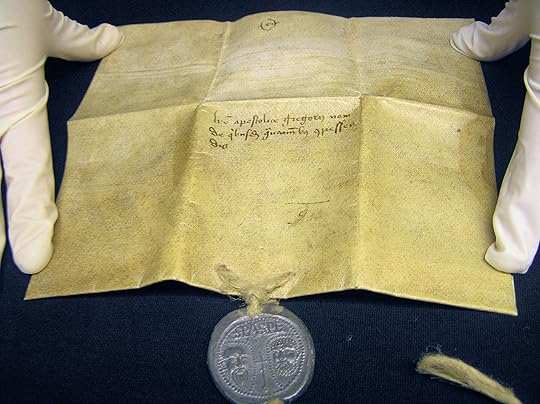
[image error]
A Papal Bull is a formal document issued by a Roman [Catholic] Pontiff upon a major act of law, curse or claim to extend the power of the [Catholic Church]. All legitimate Papal Bulls were issued on human skin, usually the skin of a sacrificed child, or some famous heretic. Forgeries are on calf skin or some other lesser medium.
The first legitimate Papal Bull is probably around 1136 called Ex commisso nobis by Pope Innocent II in the claimed excommunication of the Saxon (German) Pope at Magdeburg. Many of the key Papal Bulls are missing (such as 1249) and most have been deliberately forged over the centuries onto calf or sheep skin, to re-write history and hide their original form on human skin. However, it is unlikely the originals on the skin of those murdered by the [Catholic Church] - especially children - have been destroyed. The use of human skin is a fundamental prerequisite for a Papal Bull to have power as this is a concept of necromancy inherited through the Rabbi of Venice, the successors of the Sarmatians, themselves the successors of the Scythians and Tarsus, the successors of Mari and the amurru, the city founded itself from exiles of Ur.
The Latin word vellum from vellus means not only a fleece or hide but also “human” skin, indicating that at the Roman times the meaning of this form of writing material was still known. In fact it was the Roman Catholic Church itself through the formation of the College of Abbreviators that create the word "Parchment" to describe the fundamental form for legitimate Papal Bulls- “parchment” meaning parca = one of the three fates - the fate of death, h = letter of binding and ment/mentis = mind, thought, intention, intellect or in other words “mind/soul bound to the fate of death”.
Official Papal Method for creating Vellum/Parchment for Bulls
The awful ritual of murdering children for using their skin for Papal Bulls and other Spells was first outlined in the Grimoire of Pope Honorius III at the beginning of the 13th Century. But instead of explicitly using the word "human child", the word "kid" is used. Today, the word kids is accepted as a word for children.
The same ritual appears as standard procedure in subsequent Grimoires of black magic published by the Popes and the introduction to the specifics of the ritual may be viewed in Arthur Edward Waite's Book of Ceremonial Magic Pg 171:
Concerning the Victim of the Art
Take your kid (child); place it on a block with the throat turned upward, so that it may be easier for you to cut it; be ready with your knife, and cut the throat with a single stroke, pronouncing the name o the Spirit whom you wish to invoke. For example, say: "I slay thee, N. (name of child) in the name and to the honor of N. (name of spirit)". Have a care that two blows not be needed, but let it die at the first; then skin with the knife and while skinning it make the following Invocation...
Under all western law, the highest form of law and literally the highest form upon which any writing exists is a Papal Bull- based on parchment, being the skin of sacrificed children. In the system devised by the Roman Catholic Church, no other document can claim higher standing.
This is a key reason why all legitimate Bulls were written on the skin of sacrificed innocent children, cursed, sodomised and then brutally butchered- because the Roman Catholic Church did not publicly permit any documents to be written on parchment from human skin, no other documents could claim "human personality" and therefore real spiritual life.
Under this wholly evil and wicked system, no document has higher "life" than a Papal Bull, a binding using the flesh of innocents to "trap their soul" to the form. Regardless of this perversity, under Western law, legally Papal Bulls technically stand as the highest form of original law - therefore what they say (always written in Latin) is technically the law.
– UCADIA Books Pty Ltd
Published on December 18, 2012 23:10
Plato's Allegory of the Cave
In Plato's fictional dialogue, Socrates begins by describing a scenario in which what people take to be real would in fact be an illusion. He asks Glaucon to imagine a cave inhabited by prisoners who have been chained and held immobile since childhood: not only are their legs (but not arms) held in place, but their necks are also fixed, so they are compelled to gaze at a wall in front of them. Behind the prisoners is an enormous fire, and between the fire and the prisoners is a raised walkway, along which people walk carrying things on their heads "including figures of men and animals made of wood, stone and other materials". The prisoners cannot see the raised walkway or the people walking, but they watch the shadows cast by the men, not knowing they are shadows. There are also echoes off the wall from the noise produced from the walkway.Socrates suggests the prisoners would take the shadows to be real things and the echoes to be real sounds created by the shadows, not just reflections of reality, since they are all they had ever seen or heard. They would praise as clever, whoever could best guess which shadow would come next, as someone who understood the nature of the world, and the whole of their society would depend on the shadows on the wall.[edit]
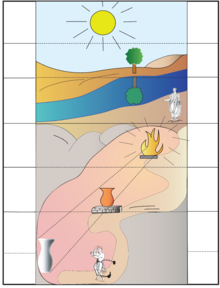
[image error] Allegory of the Cave. Left (From top to bottom): Sun; Natural things; Shadows of natural things; Fire; Artificial objects; Shadows of artificial objects; Analogy level.
Right (From top to bottom): "Good" idea, Ideas, Mathematical objects, Light, Creatures and Objects, Image, Metaphor of the sun and the Analogy of the divided line.Socrates then supposes that a prisoner is freed and permitted to stand up. If someone were to show him the things that had cast the shadows, he would not recognize them for what they were and could not name them; he would believe the shadows on the wall to be more real than what he sees."Suppose further," Socrates says, "that the man was compelled to look at the fire: wouldn't he be struck blind and try to turn his gaze back toward the shadows, as toward what he can see clearly and hold to be real? What if someone forcibly dragged such a man upward, out of the cave: wouldn't the man be angry at the one doing this to him? And if dragged all the way out into the sunlight, wouldn't he be distressed and unable to see "even one of the things now said to be true" because he was blinded by the light?After some time on the surface, however, the freed prisoner would acclimate. He would see more and more things around him, until he could look upon the Sun. He would understand that the Sun is the "source of the seasons and the years, and is the steward of all things in the visible place, and is in a certain way the cause of all those things he and his companions had been seeing" (516b–c). (See also Plato's metaphor of the Sun, which occurs near the end of The Republic, Book VI.)[3][edit]Socrates next asks Glaucon to consider the condition of this man. "Wouldn't he remember his first home, what passed for wisdom there, and his fellow prisoners, and consider himself happy and them pitiable? And wouldn't he disdain whatever honors, praises, and prizes were awarded there to the ones who guessed best which shadows followed which? Moreover, were he to return there, wouldn't he be rather bad at their game, no longer being accustomed to the darkness? Wouldn't it be said of him that he went up and came back with his eyes corrupted, and that it's not even worth trying to go up? And if they were somehow able to get their hands on and kill the man who attempts to release and lead them up, wouldn't they kill him?" (517a) The prisoners, ignorant of the world behind them, would see the freed man with his corrupted eyes and be afraid of anything but what they already know. Philosophers analyzing the allegory argue that the prisoners would ironically find the freed man stupid due to the current state of his eyes and temporarily not being able to see the shadows which are the world to the prisoners.[edit]Socrates remarks that this allegory can be taken with what was said before, namely the metaphor of the Sun, and the divided line. In particular, he likens
"the region revealed through sight"—the ordinary objects we see around us—"to the prison home, and the light of the fire in it to the power of the Sun. And in applying the going up and the seeing of what's above to the soul's journey to the intelligible place, you not mistake my expectation, since you desire to hear it. A god doubtless knows if it happens to be true. At all events, this is the way the phenomena look to me: in the region of the knowable the last thing to be seen, and that with considerable effort, is the idea of good; but once seen, it must be concluded that this is indeed the cause for all things of all that is right and beautiful—in the visible realm it gives birth to light and its sovereign; in the intelligible realm, itself sovereign, it provided truth and intelligence—and that the man who is going to act prudently in private or in public must see you it" (517b–c).After "returning from divine contemplations to human evils", a man
"is graceless and looks quite ridiculous when—with his sight still dim and before he has gotten sufficiently accustomed to the surrounding darkness—he is compelled in courtrooms or elsewhere to contend about the shadows of justice or the representations of which they are the shadows, and to dispute about the way these things are understood by men who have never seen justice itself?"– Wikipedia
Published on December 18, 2012 14:36
Cybele
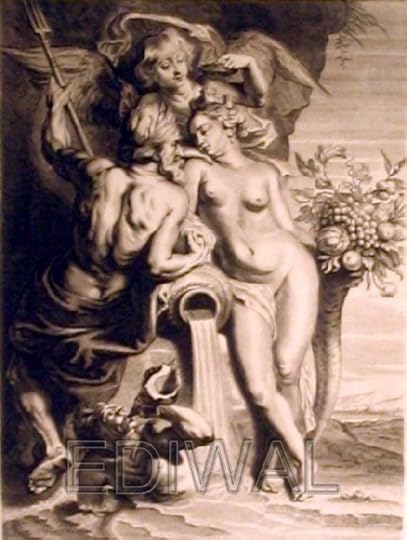


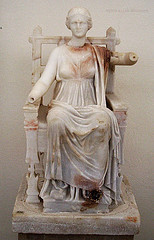
The cult of Cybele was a wild one, to say the least. Frantic dancing and chanting was required. Priests and Priestesses were known for banging cymbals and drums, wearing bright attire and heavy jewelry, their hair long and ‘greased’. But it is their practices on The Day of Blood that earned the cult the title of “Demonic” among early Christians.During The Day of Blood, Priests were charged with re-enacting the death of Cybele’s lover, Attis. The rituals that took place on this sacred day were, shall we say, a bit emasculating. Each of the priests began the Day of Blood by taking a sharp sword to their crotch and castrating themselves. After offering their testicles up to the Goddess as an offering, they buried them in shallow graves.Now that the Priests were free of their male organs, they would dress up in women’s attire, and continue with the re-enactment. After the festival was over and the day was done, these priests would continue to dress as women for the rest of their lives.In Greece, Cybele was a protector for several city-states, one of which is Athens. Her most celebrated Greek rites and processions showed her as a foreign and exotic mystery-goddess. She arrives in a lion-drawn chariot to the accompaniment of wild music, wine, and a disorderly, ecstatic following. She was unique amongst Greek worshiped deities as she had a transgendered or eunuch priesthood. In Rome she was known as Magna Mater meaning Great Mother. They would reinvent her as a Trojan goddess, which made her a goddess ancestor of the Roman people by way of the Trojan prince Aeneas. With Rome's eventual dominance over the Mediterranean, a Roman version of Cybele's cult would spread throughout the entire empire.At its peek, the Cult of Cybele was rivalled only by that of Isis, and there were temples in all provinces of the Empire. While Cybele was accepted, attitudes towards the Gallae changed over a period of time. When Cybele first entered Rome, there is no mention of the Gallae -- they were later arrivals. Romans were horrified at the frenzy in which the gallae behaved, and by their self-emasculations.Initially the Gallae were confined to temple grounds, though later they were allowed to roam city streets with other followers. Some Emporers banned Roman citizens from taking part in the rites. At other times, rich and influential families patronised the temples.On one occasion a lady of noble aspirations entered the Aedes Magna Matris and stole a string of pearls from a statue of Cybele. Several days later she was found strangled to death with them. The early christians were determined to destroy the cult and Saint Augustine condemned her as a "demon" and a "monster" and the Gallae were "madmen" and "castrated perverts." In the 4th century CE Valentinian II officially banned the worship of Cybele, and many of her followers perished at the hands of zealous Christians.Justinian continued the persecution of the cult and the Gallae. Under his reign, transgendered persons, and those indulging in same sex eroticism had their property confiscated, sacred texts burned, temples raised; they were tortured, forced to commit suicide, or burned alive.By the start of the 6th century CE, the Cult and the ancient Gallae were extinct. – excerpted from ExtraordinaryIntelligence.com
Published on December 18, 2012 06:47
Jezebel
[image error]
"Nevertheless, I have this against you: You tolerate that woman Jezebel, who calls herself a prophetess. By her teaching she misleads my servants into sexual immorality and the eating of food sacrificed to idols." Revelations 2:20
A Jezebel spirit seeks control through manipulation. It has a deep hatred of true spiritual authority, and uses emotional pressure, witchcraft and obsessive sensuality in its pursuit of power. It uses subtle persuasion to gain influence and get close to those in control. It then uses this position to gradually dominate.
In the Hebrew, the name Jezebel means literally "without cohabitation". She will not live or "cohabit" with those she cannot dominate and control. She will have no equals. Control is what Jezebel wants more than anything. Even when Jezebel appears to be submissive, it is usually out of a carefully wrought plan to gain influence.
Although it may be common to refer to Jezebel as "she", we obviously must conclude that as a spirit, Jezebel is gender neutral. Jezebel certainly has as many male slaves as female. However, since Jezebel initially tends to establish control without the actual use of physical force, she is more easily associated with classic feminine persuasion techniques.
Jezebel likes to appear close to leaders, and use their influence. She likes to use the power and influence of others to accomplish her goals and control her environment. In 1 Kings 21:8 we read " Jezebel wrote letters in Ahab’s name and sealed them with his seal, and sent them to the elders and nobles of the city." This is typical of Jezebel. She prefers to remain concealed in the background, while she manipulates situations and leaders.
Jezebel is often associated with pleasure, especially sexual pleasure. She will use any form of sensuality at her disposal to gain influence and control. Jezebel uses sensuality, but make no mistake, Jezebel is seeking CONTROL. Lusts are merely tools used to weaken others in order for her to accomplish her goal of control. In many cases sex is not involved at all.
Jezebel’s greatest enemy is true spiritual authority. As Jezebel opposed Elijah and Herodias opposed John the Baptist, so Jezebel today opposes righteous authority. In her heart, she despises all moral authority.
– Jon Hamilton
Published on December 18, 2012 06:02
December 17, 2012
Datura
In Native American tribes a young person coming of age would fast and pray for days in order to purify himself. In some cases, the initiate might be left in the wild alone. At the appropriate time, a shaman might accompany the initiate to a holy place, possibly a mountain top or cave, and a tea would be made from the roots, leaves, and seeds from the prickly seed pod of a plant called Sacred Datura. The individual would drink this tea and wait for visions.
Datura, which is refered to in some cultures as la Yerba Del Diablo, has been used to hex and to break hexes, to produce sleep and induce dreams, and for protection from evil. It has also been used for divination, to allow one to see ghosts, for communing with birds, for long hunts and strength, for sharper vision, for sorcery and to awaken supernormal perceptual states.
Like other tropane-containing plants , Sacred Datura has been used in certain rituals related to inducing the ability to fly. Datura is still widely used in the Caribbean for similar or all of the reasons as well, and called there "herbe aux sorciers" (herb of the sorcerers) among the various French speaking islanders.
The name Datura is from the Hindu Dhatura (dhat=the eternal essence of God).
The tea from Datura is extremely hallucinogenic. The hallucinogenic effects are reported to be stronger than Peyote, Psyillicibin, or LSD. However, Datura is also very toxic and can cause permanent psychosis. Solanaceous plants such as Sacred Datura contain relatively high concentrations of tropane alkaloids, primarily Atropine, Hyoscyamine, and Scopolamine, the primary alkaloid being Scopolamine. It is apparently Scopolamine that produces the hallucinogenic effects. It induces an intoxication followed by narcosis in which hallucinations occur during the transition state between consciousness and sleep.
– Anna Jones
Published on December 17, 2012 23:17
Zaretis Itys, Lepidoptera and Silver Spotted Skipper



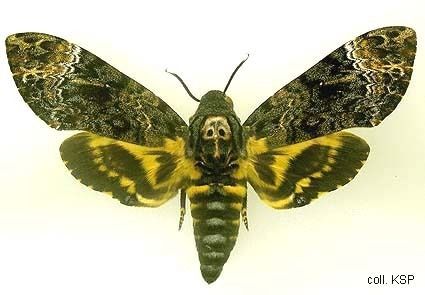

In order for the change from a caterpillar to a butterfly to take place within the pupa, the caterpillar begins releasing enzymes that literally digest nearly all of its own body. What’s left inside the chrysalis is mostly just a nutrient rich soup from which the butterfly will begin to form.
Within this goo are tiny imaginal discs, which are similar to embryonic cells. These discs are actually present within the caterpillar its whole life, but they stop growing at a certain point in the caterpillar’s development and only start again when it is time for the caterpillar to morph into a butterfly.
Once the proper time comes, the imaginal discs use the nutrients from the digested body of the caterpillar as they form into different parts of the butterfly body. There are four discs that form wings. If one of these still forming wings is removed, the other three will simply adapt to form bigger wings to compensate for the loss.
Once the process is complete, the discs replace nearly every part of the dissolved caterpillar’s body with the exception of the memory storing neurons. Although how these survive and are incorporated into the new, more complex butterfly brain is not a process science understands.
Caterpillars and butterflies have a variety of means of protecting themselves from predators. One of the most interesting is found with Lycaenidae (of which 6000species exist worldwide) is through communicating with ants using various vibrations and chemical signals. Using this, they somehow reach an agreement with the ants so that the ants will provide them some level of protection and, in exchange, the ants will be provided with an additional food source of honeydew secretions.
Other types of caterpillars are able to inflate their heads which makesthem resemble small snakes. These even often have false eye spots to further make the head look like a snake head when they inflate it. Another type of defense mechanism found with some types ofcaterpillars is using chemical excretions. These can range fromsmelly to highly toxic chemicals. Some types of caterpillars evenpurposefully ingest toxic plant matter which their bodies are thenable to retain, even through into adulthood. If some predatorchooses then to eat the caterpillar or butterfly that has retained thesetoxic chemicals, they get sick and possibly die themselves as a result. This toxicity from certain caterpillars can occasionally causeproblems for humans. This happens particularly when these hairswith toxic chemicals are released into the air and come in contactwith skin or are breathed into the lungs. In Brazil alone, there were354 such cases that were reported between 1989 and 2005, withabout 20% of these cases resulting in the death of the personafflicted. Once their metamorphosis is complete, butterflies use a specialliquid which is formulated to soften the chrysalis; once softened, theyuse their sharp claws to claw their way out. After they emerge, theybegin the process of expanding and hardening and drying theirwings. This process can take several hours and it is a time when thebutterflies are extremely vulnerable. The specific research project that showed moths retain somememories from when they were caterpillars was done at GeorgetownUniversity on tobacco hornworm caterpillars. They trained thecaterpillars to avoid certain smells. When the caterpillars morphedinto moths, they retained the aversion to those smells while thosenot trained had no such aversion. Interestingly, they also found ifthey only trained caterpillars when they were very young (beforethree weeks old) and not again as “mature” caterpillars, they wouldnot remember to avoid the smells when they turned into moths. Only when the caterpillars were trained close to their metamorphosiswould they remember. Monarch butterflies are known to migrate around 3000 miles duringtheir lifetime, from Mexico to Southern Canada. Fossil records indicate butterflies have been around on the Earth atleast 40-50 million years.
–Daven Hiskey
Published on December 17, 2012 23:01
Important Note - See Sidebar Please
The feed is making the blog dense and difficult to read - also without accompanying videos.
Please go directly to my site www.bygebutler.com to see the blog.
It is companion reading to the novel.
Thanks The feed is making the blog dense and difficult to read - also without accompanying videos.
Please go directly to my site www.bygebutler.com to see the blog.
It is companion reading to the novel.
Thanks! ...more
Please go directly to my site www.bygebutler.com to see the blog.
It is companion reading to the novel.
Thanks The feed is making the blog dense and difficult to read - also without accompanying videos.
Please go directly to my site www.bygebutler.com to see the blog.
It is companion reading to the novel.
Thanks! ...more
- G.E. Butler's profile
- 8 followers



